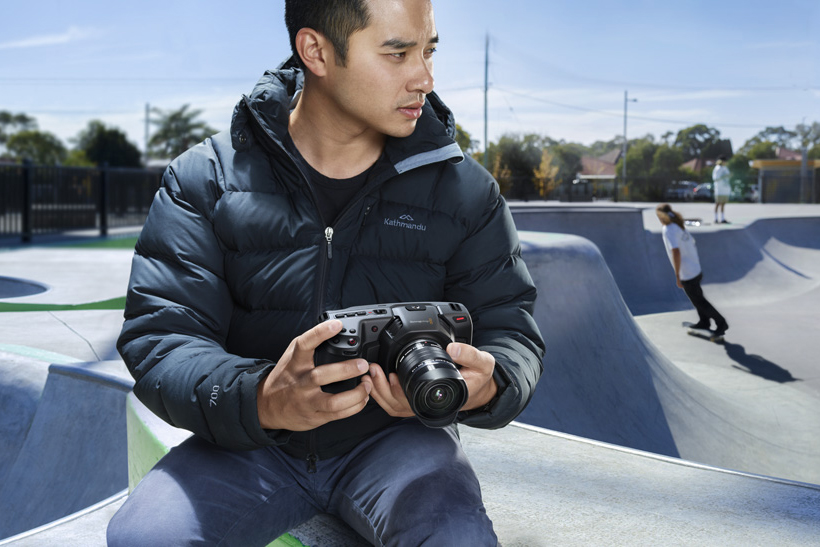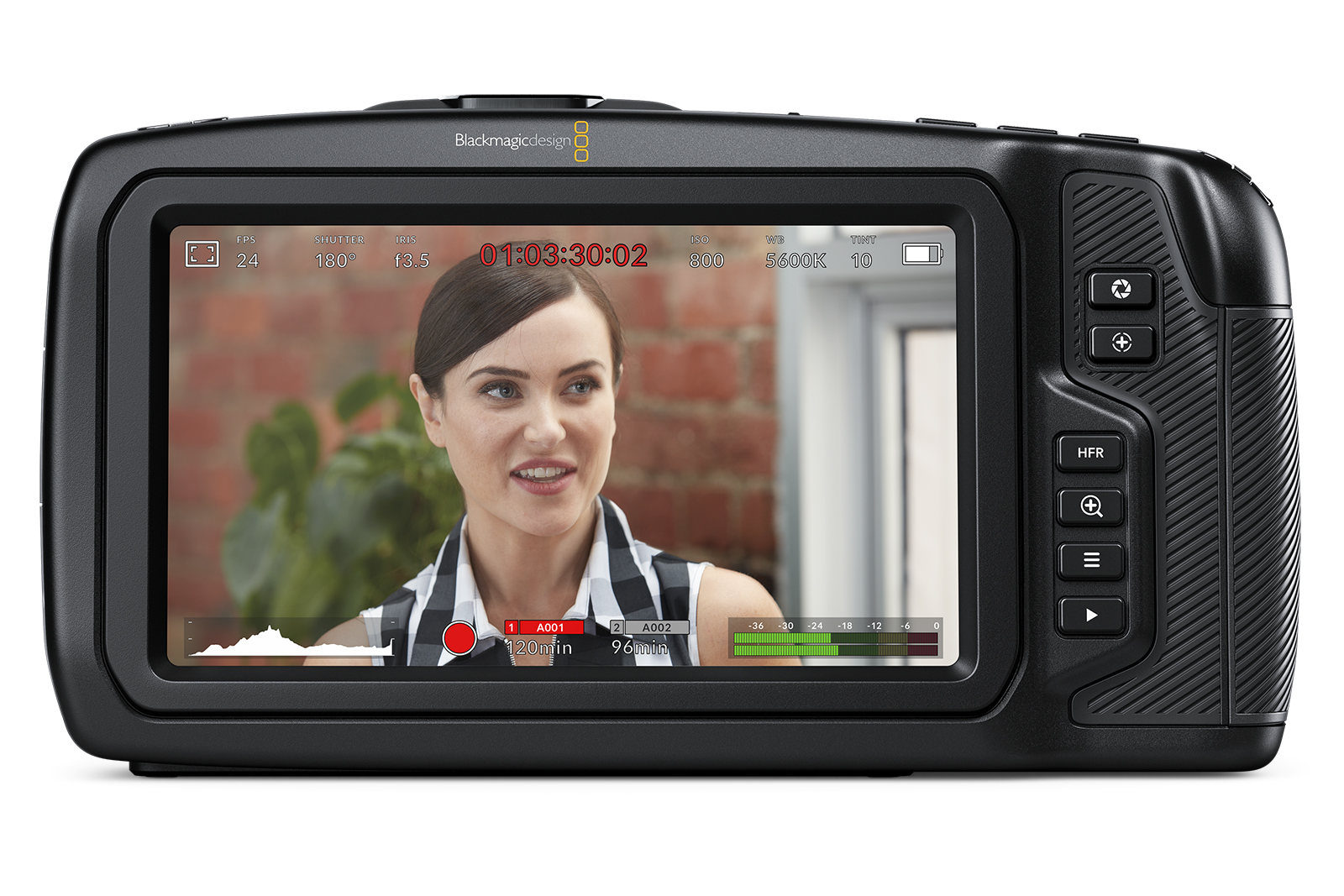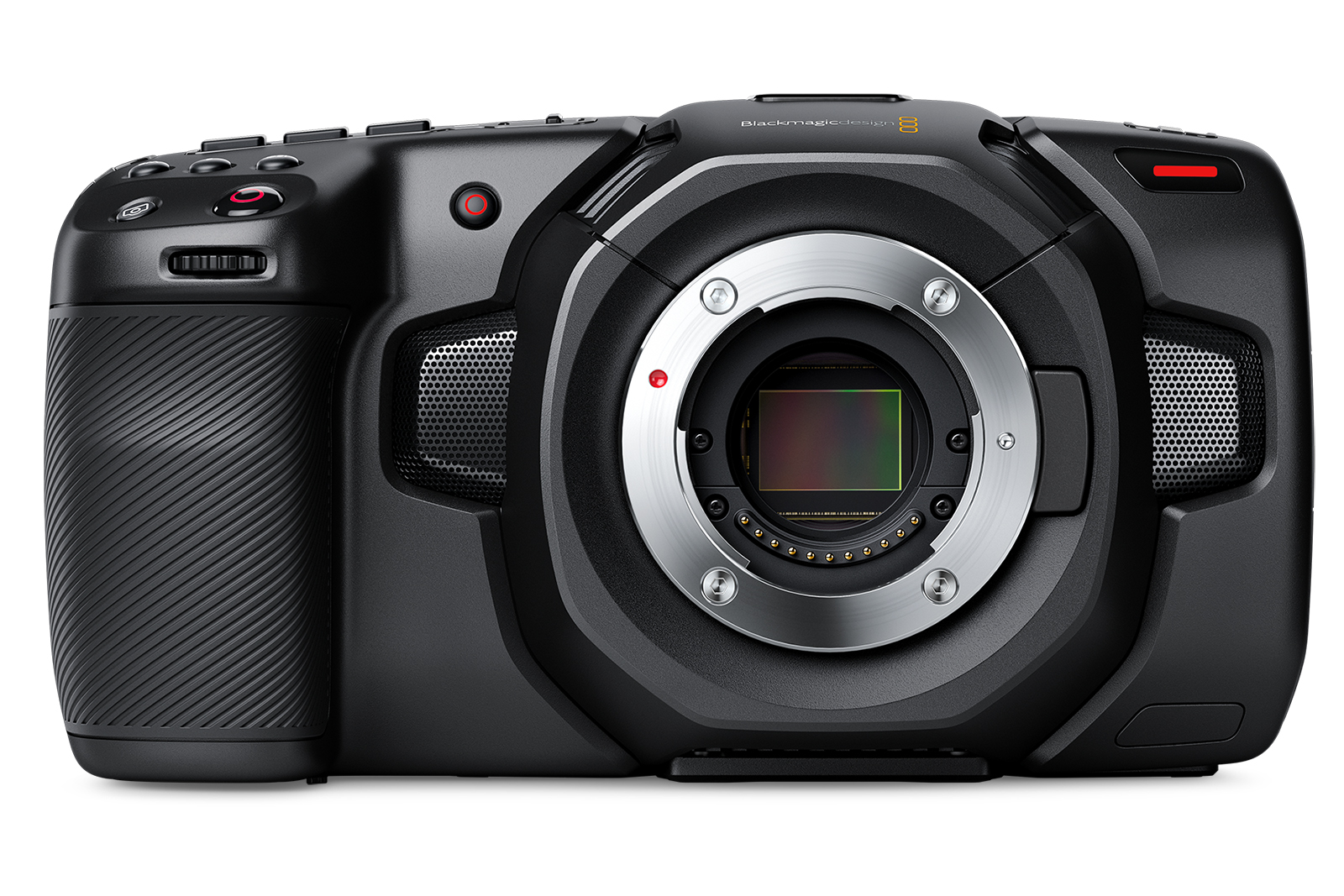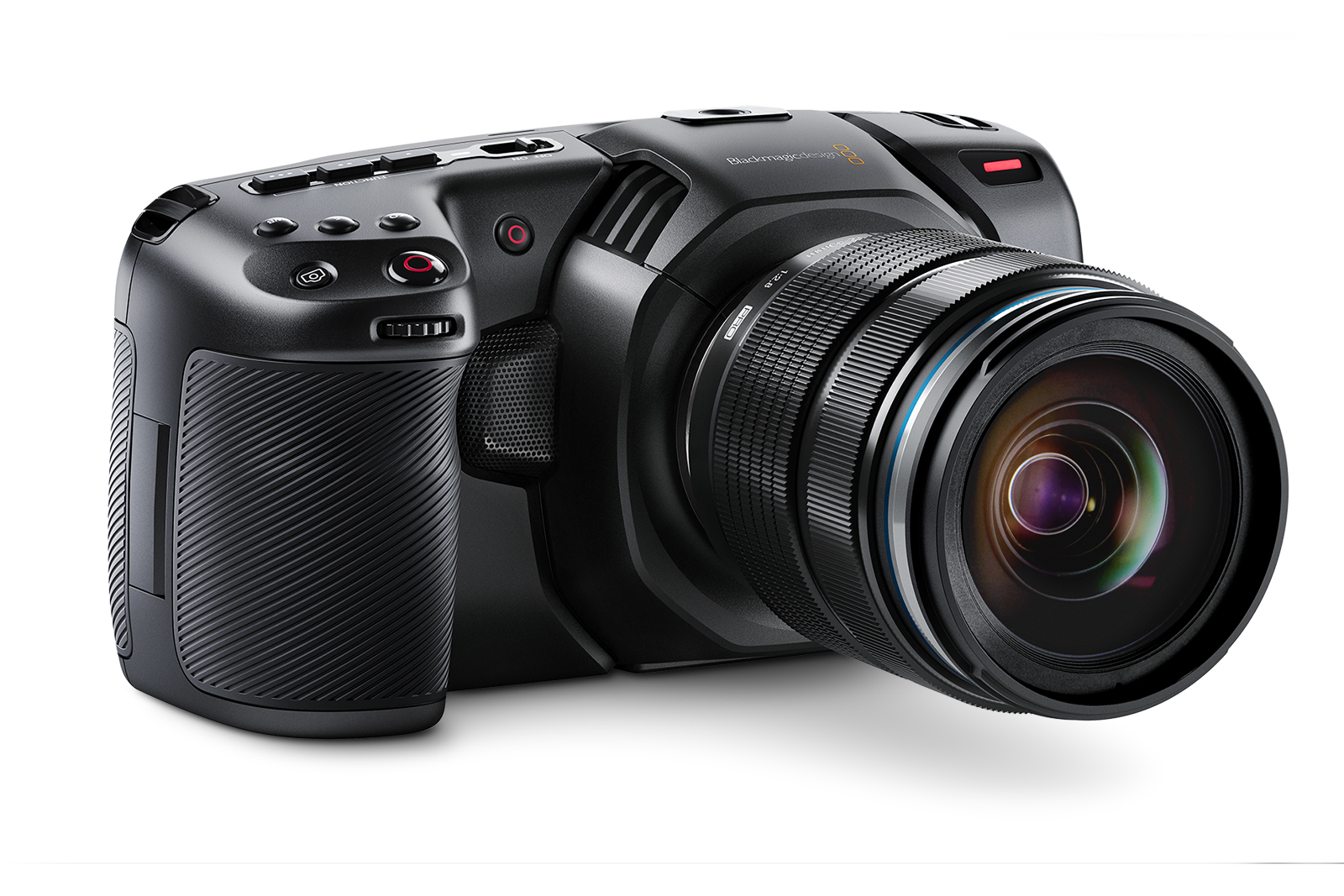Blackmagic Design is known for high-end digital film cameras and now the company has a 4K shooter that will fit in more budgets — and hands. The Blackmagic Pocket Cinema Camera 4K, announced on Monday, April 9, during the National Association of Broadcasters Show, is a $1,295 Four Thirds cinema camera packed into a design more similar to a handheld still camera. The launch comes as Blackmagic also shared a major update to the DaVinci Resolve 15 software.
Building on the original Pocket Cinema Camera, the refreshed model brings 4K resolution to the budget-friendly camera line. The bespoke sensor is specifically designed for cinema offering a native aspect ratio and resolution of 4,096 x 2,160 to meet the DCI standard. The sensor also benefits from dual native ISO — just like another MFT camera, the Panasonic GH5S — for low-light shooting along with 13 stops of dynamic range. The camera can record in 4K resolution at 60 fps, or in HD at up to 120 fps. With an emphasis on professional filmmakers, both 10-bit Apple ProRes and 12-bit RAW formats are offered, along with the ability to work with 3D LUTs while monitoring and recording.
The Pocket Cinema Camera 4K is still meant to be portable and flexible, however, and doesn’t need external recording equipment. It can save files — including RAW video — straight to internal SD or CFast 2.0 memory cards. Alternately, it can also record directly to an external hard drive via USB-C, an industry first according to Blackmagic, bypassing the need for expensive external recorders.
With 13 stops of dynamic range, the camera can shoot HDR in both video and film modes. An “extended video” mode offers the increased latitude of film mode, but in an optimized file that doesn’t require as much postproduction work. Blackmagic also integrated its fourth-generation color science, which the company claims offers superior quality to both DSLRs and even costlier cinema cameras.
All of this tech is crammed into a camera body about the same size as a standard mirrorless camera, making it perfect for weddings, independent films, sports, corporate videos, travel, and more. Blackmagic calls the design “space age” thanks to an advanced carbon fiber and polycarbonate composite construction that helps ward off damage from minor bumps and drops. The camera is a bit wider than the still cameras it is modeled after in order to accommodate a 5-inch touchscreen. In the DSLR-like grip you’ll find dedicated, physical controls for ISO, shutter, aperture, and white balance.
Video ports include a mini XLR audio input, HDMI, and a 3.5mm stereo audio jack. Audio can also be captured through four built-in mics. Bluetooth is also built-in.
The active Micro Four Thirds mount is compatible with standard MFT lenses from Panasonic, Olympus, and other manufacturers. Optional adapters allow for the use of lenses from other brands and formats to be used, such as Canon EF, Nikon F, and even PL-mount cinema lenses. Autofocus is available with some compatible lenses.
The camera includes a full license for DaVinci Resolve Studio 15, video editing and coloring software that was also updated today. Blackmagic says Resolve is now the first postproduction program to combine online and offline editing all the way through editing, color, collaboration, and visual effects. That’s because the software adds a new Fusion panel for controlling visual effects, including paint, composing, particles, and text. The change strengthens the software’s approach to all-in-one video editing rather than separating apps for audio and graphics controls, Blackmagic says, which helps create a faster workflow.
The updated software includes 250 new visual effects tools along with over 100 other updates across the board, including 3D, VR, collaboration network rendering, and other tools. DaVinci Resolve 15 is available to download now as a public beta. Without a camera purchase, the full version retails for $299.
Editors' Recommendations
- Optoma’s CinemaX P2 short throw 4K projector has a built-in soundbar
- Blackmagic Design’s new 12K cinema camera might actually make sense







